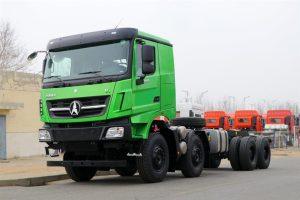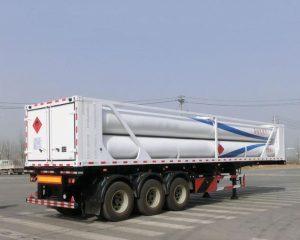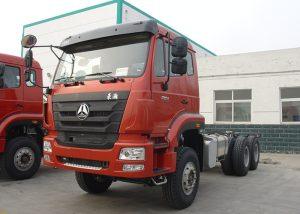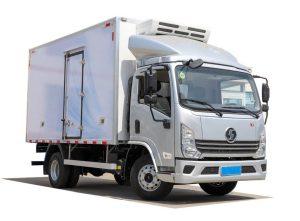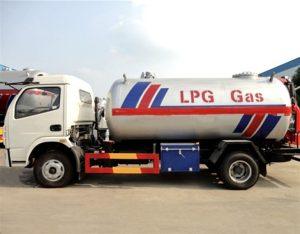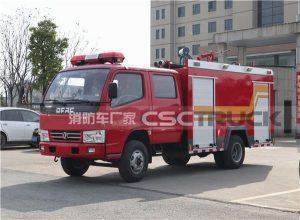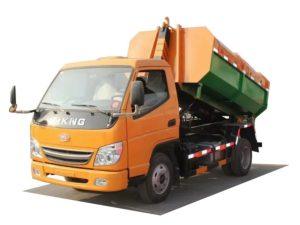Monday to Saturday - 8:00 -17:30
How Many Gallons Does a Tanker Truck Hold? A Comprehensive Guide
Understanding the capacity of tanker trucks is essential for various industries, such as transport, agriculture, and logistics. In this article, we will explore everything you need to know about tanker truck capacities, the factors influencing them, and practical examples to help you comprehend their importance in everyday scenarios.
Understanding Tanker Trucks
Tanker trucks are specialized vehicles designed to transport liquids, gases, and bulk solids. They come in various shapes and sizes, tailored to carry different types of cargo, including fuel, chemicals, milk, and even food products.
The Importance of Capacity
Knowing how many gallons a tanker truck can hold is crucial for businesses involved in logistics and transportation. It affects operational efficiency, cost management, and scheduling. Larger capacities can lead to fewer trips and lower transport costs, making it vital for companies to choose the right tanker size for their needs.
Types of Tanker Trucks
Before diving into capacity specifics, it’s important to recognize that not all tanker trucks are created equal. Here’s a breakdown of the main types:
Fuel Tankers
Fuel tankers are designed specifically to transport gasoline, diesel, or aviation fuel. Their design allows for safe transport, often featuring insulated or double-walled tanks to minimize spillage and improve safety.
Chemical Tankers
Chemical tankers carry hazardous materials and are built with special equipment to ensure safety. They often have pressure control systems and are made from materials that can handle corrosive substances.
Food-Grade Tankers
Designed to transport food products like milk and juices, these tankers must adhere to strict hygiene standards. Food-grade tankers are constructed from materials that are safe for consumables.
Water Tankers
Primarily used for transporting water, these trucks are common in construction sites and agricultural applications. They can deliver water for irrigation, firefighting, or residential needs.
Tanker Truck Capacities
The capacity of tanker trucks can vary significantly based on their design and purpose. Below are some common types of tanker truck capacities:
| Tanker Type | Typical Capacity (Gallons) |
|---|---|
| Fuel Tankers | 5,000 – 11,000 |
| Chemical Tankers | 6,000 – 11,600 |
| Food-Grade Tankers | 5,000 – 7,000 |
| Water Tankers | 1,000 – 6,000 |
Factors Influencing Tanker Capacity
The actual capacity of a tanker truck can be influenced by several factors:
Design and Engineering
Different designs have different volumes. For example, cylindrical tanks generally have a higher capacity than rectangular ones due to aerodynamics.
Regulatory Requirements
Local and national regulations may restrict tanker sizes to ensure safety on the roads. Understanding these regulations is essential for compliance.
Payload Regulations
State and federal restrictions on the maximum weight a truck can carry can also affect how much liquid it can transport. Heavier tanks may not be allowed on certain roads.
Real-World Examples of Tanker Truck Operations
Example 1: Fuel Transportation
Consider a fuel station that needs to stock up on gasoline. A typical fuel tanker with a capacity of 8,000 gallons can make a single trip to deliver fuel, reducing transportation costs and time.
Example 2: Agricultural Water Delivery
In agriculture, a water tanker truck holding 4,000 gallons can help irrigate a field effectively. Fewer trips maximize efficiency, allowing farmers to save on fuel and labor costs.
Choosing the Right Tanker for Your Needs
Selecting the right tanker truck involves assessing your industry’s needs, budget, and compliance requirements. Here are some tips to guide your decision:
Define Your Cargo Type
Understanding the nature of what you need to transport is critical. Different substances require different tanker types. Always prioritize safety.
Evaluate Capacity Needs
Estimate your transportation frequency and distances. Larger tanks might reduce overall trips and save time; however, ensure they comply with weight regulations.
Consider Cost Efficiency
Calculate the total cost of ownership, including maintenance, insurance, and the initial purchase price. A larger tank may be more cost-effective in the long run.
Environmental Considerations
With growing concern over environmental issues, the transport industry is looking toward greener solutions. Many fuel and chemical companies are exploring biofuels and electric trucks. Understanding how tanker trucks impact the environment is essential for responsible operations.
Eco-Friendly Practices
Implementing practices such as regular maintenance checks to avoid leaks and optimize fuel efficiency can significantly reduce a company’s ecological footprint.
Common Questions about Tanker Truck Capacities
FAQs
1. How many gallons does a standard fuel tanker truck hold?
A standard fuel tanker truck typically holds between 5,000 to 11,000 gallons, depending on its design and regulations in the area of operation.
2. Can tanker trucks transport hazardous materials safely?
Yes, tanker trucks designed for hazardous materials come equipped with specific safety features to ensure safe transport; however, they must adhere to strict regulatory guidelines.
3. What is a food-grade tanker truck?
A food-grade tanker truck is specifically designed to carry food products, constructed from materials that meet health regulations to ensure the safety and cleanliness of consumables.
4. How can I determine the right tanker size for my business?
Analyze your transportation frequency, types of products, regulatory limitations, and cost efficiency to help in selecting the appropriate tanker size.
5. Do regulatory requirements affect tanker truck capacity?
Yes, local and national regulations may limit the maximum size and weight of tanker trucks, ultimately influencing how much they can carry.
6. Are there any environmental impacts from tanker truck operations?
Yes, tanker truck operations can lead to environmental impacts such as oil spills and greenhouse gas emissions. Using eco-friendly practices and technologies can mitigate these effects.


